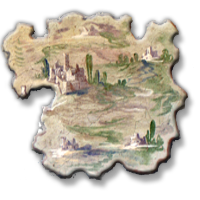Introduzione
The Province of Our Lady of Consolation was created on July 12, 1961 and began formally two weeks later with the official proclamation which took place in the Monastery of Valentuñana, Sos del Rey Católico, Zaragoza. By the end of the year 2007, the province counted with 140 religious distributed in 28 communities located in Spain, Guatemala, Panamá and the Dominican Republic.
Scheda di approfondimento
On July 9, 1961, the General Council authorized the Prior General, Fr. Eugenio Ayape, to solicit from the Holy See the required rescript with the purpose of proceeding to the division of the Province of Our Lady of Candelaria.
The new province came into being on July 12, 1961 with the title of Our Lady of Consolation. All of the houses which the Province of Candelaria had in Spain, Panama, Guatemala, Nicaragua and El Salvador plus the residence of Palmira and Cali in Colombia. All religious resident in these houses were also assigned to the new province. There were 16 communities, 170 religious, 15 novices and 247 minor seminarians. Pamplona was chosen as the seat of the provincial government. The first chapter was to be celebrated in 1964.
The first steps than by the new province were evident. The abundance of vocations made it possible to reinforce older ministries and to open new ones. In 1967, the Prior General praised the vigor of the new province as a guarantee of future development. Within six years, seven new ministries were established and the number of new religious increased by 37, from 170 to 207.
The broadening of the apostolic horizons was the most visible aspect of the province in these years. This was not, however, the only notable characteristic. In addition, the attention given to the academic preparation of the religious was quite outstanding. The first provincial in a letter to the community promised that he would dedicate his greatest efforts to the formation of the youth no matter what the sacrifice.
Nonetheless, around this time, certain symptoms of fatigue and discontent began to cast a shadow. In spite of all, a good community spirit was maintained and traditional discipline was respected but the traditional optimism began losing ground to a certain anxiety which created a state of endless questioning.
The traditional models of community living and of education and apostolic methods were among the matters questioned. There were still vocations coming to our communities but perseverance of the same diminished from day to day.
In spite of these difficulties, the province continued to demonstrate a great vitality. Year after year, the ranks of the religious grew thinner because, each year, the fruit of the seminaries became more and more less abundant. Fortunately, there had been a large number of younger religious from previous decades and they worked with dedication and enthusiasm maintaining the works of the province. The province turned over the academic education of the candidates to other institutions and learned how to make use of the laity in the ministries. Taking everything into consideration, it is surprising to recognize how it became possible to maintain so many ministries. Only the abnegation and hard work of a considerable number of religious can explain this situation which is truly extraordinary.
The apostolate of education, parish ministries, service in the missions, and the formation of seminarians as well as the labor in favor of promotion and development constitute the manner of the presence of the province in the Church and her way of serving the people of God. There should be a special chapter to talk about the mission of Bocas del Toro which was turned over to the province in 1964. Bishop Martin Legarra became the first bishop-prelate of the mission. The mission of Bocas has a territory of 8745 kilometers and a population 100,000, the majority of whom are indigenous people of diverse ethnic backgrounds. The missionaries have not only realized apostolic labors and the construction of chapels in all of the parishes but have also been engaged in a labor of human and social promotion.
Year of foundation: 1961
Number of religious: 133
Number of communities: 26
Countries: Spain, Dominican Republic, Guatemala, Panamá.
Countries:45.
Missions: Bocas del Toro (Panama)
Seat of the province
Orfeo, 1
28022 Madrid (Spain)



